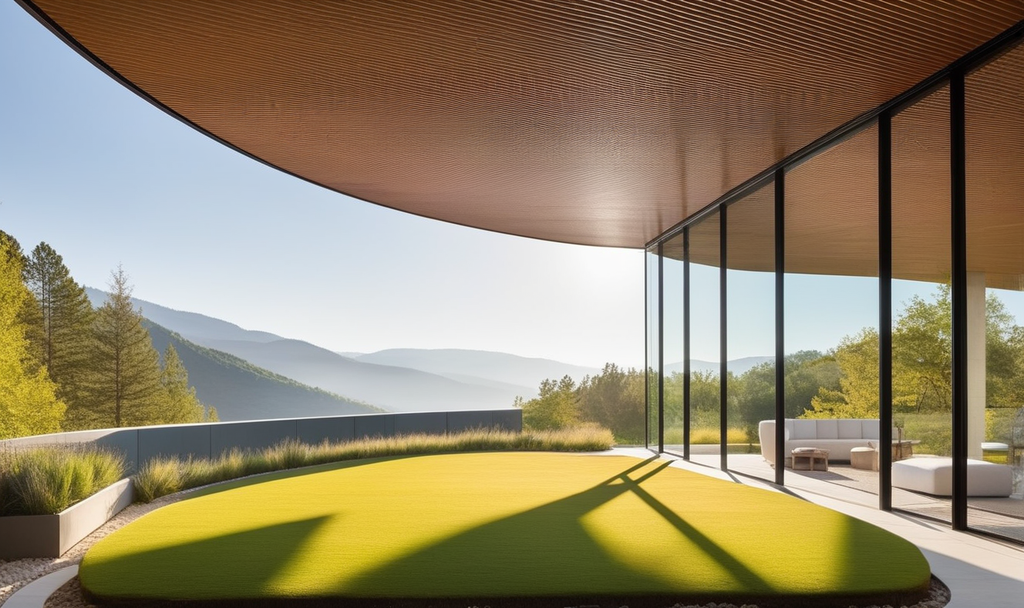In the hustle and bustle of our daily lives, we often overlook the profound impact that our physical environment has on our mental and emotional well-being. The spaces we inhabit, whether consciously or unconsciously, influence our mood, behavior, and overall sense of contentment. This intricate interplay between architecture and psychology is what we refer to as “The Psychology of Space.”
Creating Harmony in Design
Architects and designers wield a considerable influence over the psychological responses of individuals to a given space. From the layout of a room to the choice of colors and materials, every element plays a crucial role in shaping our experiences. One might wonder: How can the careful arrangement of physical elements affect our well-being?
The Power of Spatial Arrangement
Consider the layout of a room, for instance. An open and airy space can evoke feelings of freedom and expansiveness, fostering a sense of calmness and relaxation. On the contrary, cramped and cluttered spaces may induce stress and unease. Understanding the psychological impact of spatial arrangement allows architects to create environments that promote positive mental states.
Lighting’s Influence on Mood
One of the key elements often underestimated is lighting. Natural light, with its dynamic changes throughout the day, can have a profound impact on our circadian rhythm and overall mood. Dim, poorly lit spaces can contribute to feelings of lethargy and gloominess, while well-lit areas can enhance alertness and productivity.
Color Psychology in Architecture
Colors, too, play a crucial role in shaping our psychological responses to space. Warm colors like red and yellow can evoke feelings of warmth and energy, while cool colors such as blue and green promote a sense of calmness and tranquility. Striking the right balance and choosing appropriate colors can significantly contribute to a harmonious and inviting atmosphere.
Materials and Textures: A Tactile Experience
The materials and textures used in architectural design add another layer to the psychological impact of a space. A room adorned with natural materials like wood and stone can create a connection to nature, fostering a sense of groundedness. On the other hand, harsh or synthetic materials may evoke discomfort and unease.
Balancing Openness and Privacy
The balance between openness and privacy is a delicate dance in architectural design. Spaces that provide a sense of privacy while maintaining openness to the surroundings can contribute to a feeling of security and comfort. Understanding the human need for both connection and solitude is fundamental in creating spaces that support our psychological well-being.
The Role of Nature in Urban Spaces
In an increasingly urbanized world, the incorporation of nature into architectural designs becomes paramount. Parks, green roofs, and other green spaces not only contribute to the aesthetic appeal of a city but also have proven psychological benefits. Exposure to nature has been linked to reduced stress levels, improved mood, and enhanced cognitive function.
A Call for Mindful Design Practices
As we unravel the intricate relationship between architecture and psychology, a call for mindful design practices becomes apparent. Architects and designers bear a responsibility to create spaces that contribute positively to the well-being of the individuals who inhabit them. Mindful consideration of the psychological implications of design choices can lead to environments that nurture and uplift.
The Challenge of Achieving Balance
While we delve into the psychology of space, it’s essential to recognize the challenge of achieving a balance that caters to diverse individual needs. What may be soothing for one person might be overwhelming for another. Hence, the importance of customization and flexibility in design, allowing spaces to adapt to the ever-evolving dynamics of human experiences.
If you have any question about this article, please contact us …
If you want, you can learn more about this through the Cambridge dictionary.
Conclusion: Designing for the Human Experience
In conclusion, the psychology of space transcends the mere physicality of architecture. It delves into the realms of emotions, cognition, and well-being. Architects hold the power to shape environments that either elevate or hinder our psychological states. By understanding the intricate connections between design choices and human experiences, we pave the way for a future where our built environment becomes a source of comfort, inspiration, and holistic well-being.
As we navigate the intricate dance between architectural design and psychological well-being, let us strive for spaces that not only captivate the eye but also nourish the soul. The psychology of space is a fascinating journey into the heart of human experience, where each design choice carries the potential to influence our emotions, thoughts, and ultimately, our well-being.

